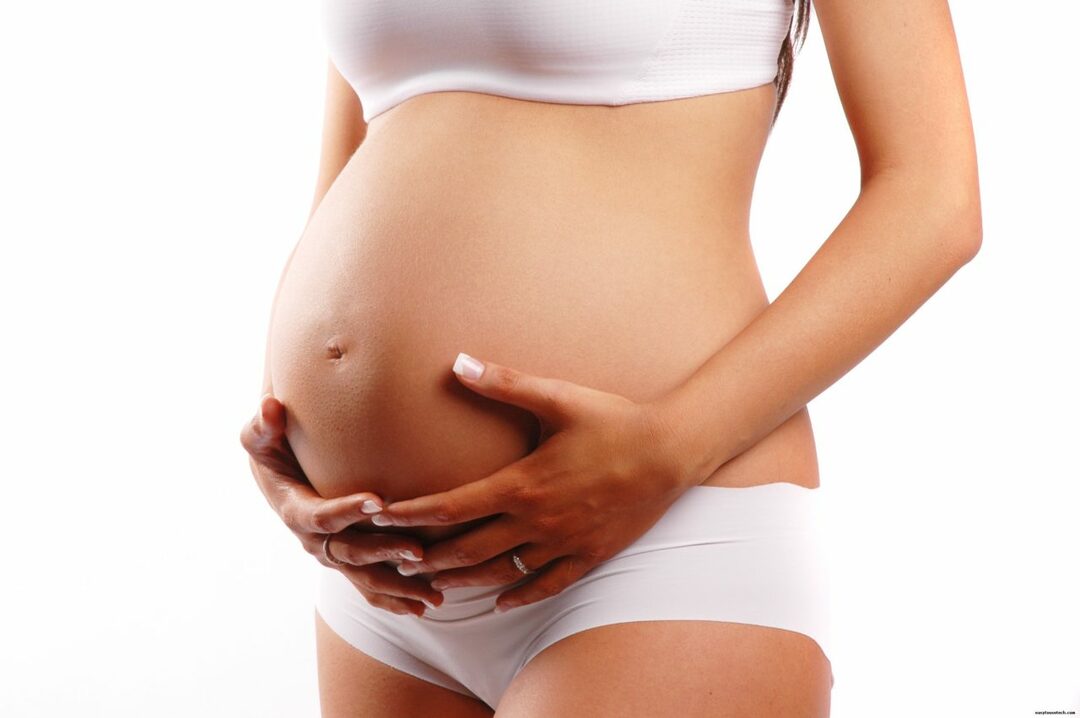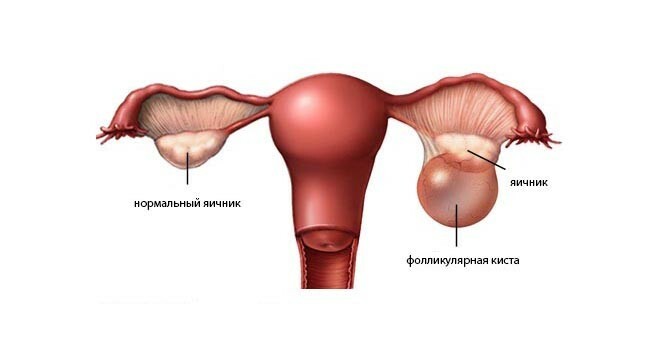Adnexitis is a disease that is quite common in the practice of gynecologists. Quite similar to many other harmless diseases, signs often make it difficult to diagnose it. The commencement of any disease entails consequences, in the case of adnexitis( in other words, salpingo-oophoritis), the matter can go right up to infertility. Many women are interested in the question of whether it is possible to become pregnant with a chronic salpingo-oophoritis. To answer, it is necessary first to understand what a disease is, and how the chronic form differs from others.

Adnexitis refers to the disease of the uterine appendages( ovaries, fallopian tubes), which is characterized by an inflammatory process. This process begins because of the penetration of microorganisms into the tubes. In 50% of cases, the inflammation then changes to the ovaries, so the name salpingo-oophoritis can also be used as a synonym.
Reasons for
The occurrence of adnexitis in the body of a woman is associated with infections( bacteria) that directly trigger the inflammatory process. But you need to know that not every organism of infection is affected in this way. For this, as a rule, a certain predisposition is required. Since the environment of the fallopian tubes is itself sterile, a healthy immune system is fully capable of protecting them from the negative effects of any microorganisms. Therefore, symptoms of adnexitis occur in women with weakened immunity. Such weakening can contribute to a number of factors:
- susceptibility to such diseases as angina, pyelonephritis, chronic tonsillitis;
- unhealthy lifestyle;
- stress, overwork, hypothermia;
- neglect of personal hygiene rules;
- intrauterine manipulation( scraping, using an intrauterine device, a hysteroscope for inspection, etc.).
Thus, if a woman has a healthy immune system, then, despite the presence of sexual infections in the body, it will be able to resist any microorganisms.
Symptoms of
The difficulty in detecting this disease is its symptomatology similar to other diseases. In this case, it differs in different clinical forms. So, the acute course, subacute and chronic are isolated.
Acute
The acute symptoms are characterized by general symptoms in the form of weakness, raising the body temperature to about 38 degrees. In this case, there are pains in the lower abdomen, tension of the abdominal muscles, which is accompanied by painful palpation. Headaches, chills, muscle aches, and urination disorders can also occur. At the same time, during the transition of the disease into a subacute form, the listed symptoms begin to gradually subside.

The complication of the acute form of adnexitis is the adhesion process in the pelvic organs. In the case of infection in the ovaries, cavities filled with pus may appear. If you start this process, the fusion of these cavities will lead to an ovarian abscess: it will turn into a pouch filled with pus. Another possible complication may be the transition of infection to the abdominal cavity, which will lead to its inflammation and the possibility of developing peritonitis.
Improper treatment of an acute form can lead to the development of the disease in a chronic form.
Chronic
As mentioned above, the symptoms of a chronic form differ from an acute one. For this course characteristic pains in the lower abdomen( aching) with flowing into the groin and vagina. In some cases, reflected pain is also observed. Symptoms include the violation of the cycle, the irregularity of menstruation, the change in their duration( both in the direction of decrease and in the direction of increase), abundant and painful discharge. Exacerbation in chronic form falls on the period of menstruation, in case of hypothermia, and also the operation.
The duration of this disease affects the female body quite seriously. Due to inflammatory processes there is a change in the hormonal plan. This is facilitated by the negative impact of microorganisms on the ovaries - the body responsible for the production of hormones. All this can lead to neuroses, excitability, rapid fatigue, as well as changes in weight.
Frequent exacerbations can affect the libido of a woman( his decrease), and also lead to painful sensations during sexual intercourse. The disease, most often, subsequently leads to infertility, as well as exposure to the development of ectopic pregnancy.
Diagnosis
Identification of adnexitis, as well as its forms of development, involves the application of both general clinical and private medical research. So, diagnostic measures include, first of all, a gynecological examination. He is able to show the degree of inflammation of the uterine appendages, and sometimes the uterus itself. Also makes a series of tests that can show the presence of an infection in the body or point to another cause of the disease. These include a general blood test, smear on the microflora, PCR( allows to diagnose the so-called hidden infections), colposcopy( if necessary) and ultrasound examination of the pelvic organs.
In the case when the diagnosis is carried out for a woman planning a pregnancy, it is advisable to perform laparoscopy. This is due to the accuracy of the results obtained and the speed of the analysis itself. At the same time, the probability of false readings reduces to a minimum.
For complete confidence in the diagnosis, along with the analysis, one should take into account the entire clinical picture, which consists of the patient's complaints and his complete anamnesis.
Adnexitis and pregnancy
Chronic adnexitis and pregnancy are two concepts that are not recommended to be combined. That is why pregnancy planning is an important stage that allows us to identify all the diseases that prevent this process. When diagnosing adnexitis, especially its chronic form, it is necessary to postpone pregnancy for the period of treatment, because the process of chronic adnexitis is accompanied by exacerbations, which, in particular, can be caused by hormonal changes in the body of a pregnant woman.

However, it happens that the diagnosis occurs after the onset of pregnancy. Here there are two options: either the onset of an exacerbation( which is characterized most often by pains in the lower abdomen and characteristic discharges) or by the non-occurrence of exacerbation( this is dangerous because a woman may not know her diagnosis, but the infection will spread more and more throughout the body).
The absence of adnexitis treatment during pregnancy can lead to infection of the fetus, which can happen both intrauterine and during childbirth, when the baby is no longer protected by any amniotic membranes. All this boils down to the fact that you should think carefully before you conceive a child with a diagnosis of chronic adnexitis, and it is best not to risk it and give it up until the doctor tells you a favorable period.
Treatment of
One of the most important rules in the treatment of the disease in question is no self-treatment! This can lead to a temporary improvement, but in the future may cause a deterioration in the overall condition. Therefore, it is important to comply with all the prescribing doctor's instructions. Treatment of adnexitis depends, first of all, on the cause of its occurrence, therefore all therapy should be based on a thorough diagnosis of the disease.
Treatment is carried out both out-patient and in-patient. The acute form of adnexitis is treated with a specially developed antibacterial, desensitizing and anti-inflammatory therapy. In addition, an anesthetic can also be attributed. Chronic adnexitis is more difficult to cure. In addition to the above types of therapy, the doctor also appoints immunomodulators and immunostimulants, as well as resorption therapy. As a rule, the patient is prescribed physiological procedures( laser, ultrasound therapy, and manual therapy) together with gynecological massage, which help to avoid adhesion.
Treatment during pregnancy
Treatment of adnexitis in a pregnant woman is complicated by the fact that many drugs have a negative effect on the fetus. Particular attention should be paid to the situation in which infection only occurs during pregnancy, as it threatens intrauterine infection of the child. The inflammatory process itself, which already exists for the period of pregnancy, threatens with infection of the birth canal, which can lead to infection of the child during childbirth. In such cases, a caesarean section is usually recommended.
In the case when adnexitis was the result of infection with a venereal disease, a woman is strongly recommended to terminate the pregnancy. But if the inflammatory process began because of the presence of microorganisms, natural for the body of a woman( candida, gardnerella), then the doctor prescribes usual medical treatment based on the type of bacteria, their sensitivity to certain antibiotics, and the term of pregnancy.
Prevention
To prevent adnexitis, it is important to consider the factors that can lead to its onset. Of course, infection with sexually transmitted infections should be avoided. To do this, it is sufficient to regularly undergo a routine examination and avoid frequent changes in partners. Since the development of the disease is directly related to the immune system of a woman, one should protect oneself from reducing such an organism function. This includes also the protection of the body from hypothermia and overwork, compliance with personal hygiene rules, as well as the timely treatment of any diseases of genital organs, especially acute forms.



